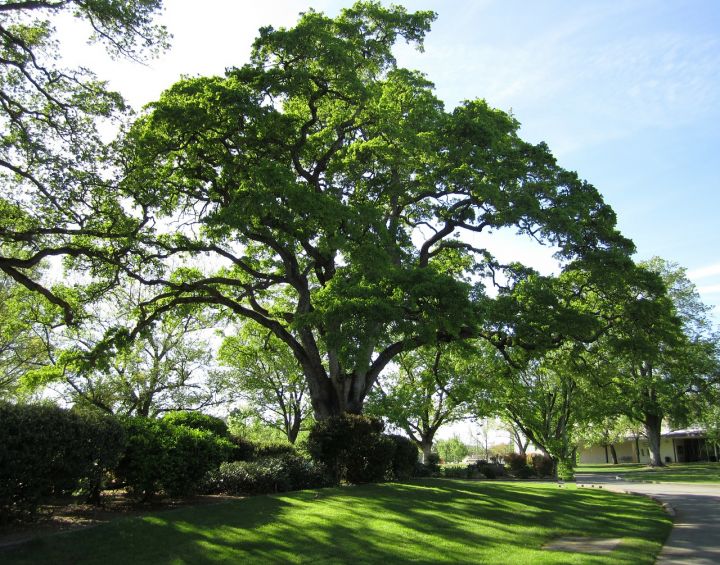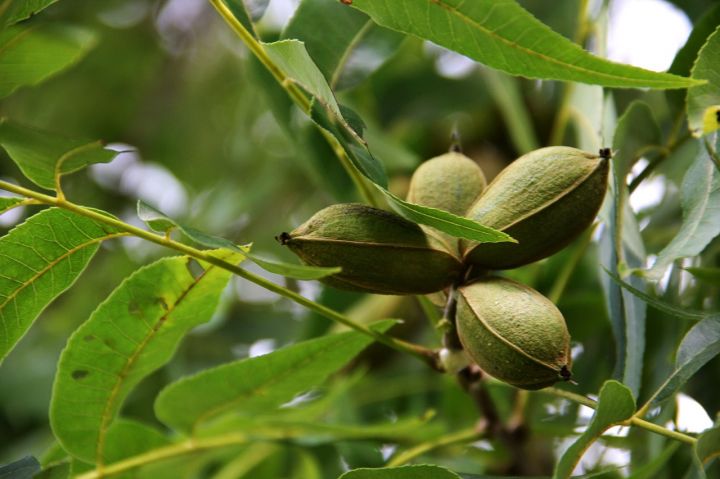Which Texas Shade Tree is Right For You?
August 7, 2018 | By webadmin
Urban environments in Texas can prove a difficult place for many plants to thrive, including shade trees. Tight spaces, lots of concrete and construction, compacted soils, extra heat...you name it and we can make life pretty hard on our landscape trees. But here in Texas, shade is a lifesaver! So choosing the right shade tree is important.
Native and adaptive trees survive and thrive best in the North Texas region. We’ve compiled a list of some of our favorite shade trees for the tough urban environment:
- Live Oak: Who doesn’t love the majestic live oak? Revered for its massive size (up to 50’ tall with a 100-foot wide canopy) and long life, live oaks provide an enormous canopy of shade for your yard. They are evergreen and highly adapted to our clay soil in North Texas. But this is a big tree, not meant for small urban yards or tight spaces. Be sure you have a large area for this tree’s canopy to spread so it doesn’t encroach upon your roof, powerlines, or roadways.

Live Oaks need lots of room to spread.
- Chinkapin Oak: This oak is native to Texas and is a member of the white oak family (which are found to be less susceptible to oak wilt). Chinkapin oaks reach a manageable height of 50’ and are very drought resistant, once established.
- Chinese Pistache: If you are looking for a shade tree with standout fall color, Chinese pistache is an excellent choice. It is easy to grow and tolerates the many challenges of urban tree living. This medium sized tree reaches heights of 40’-50’ and spreads to 30’ wide. This is a good tree specimen for small urban yards near power lines.
- Pecan: Of course, any list of Texas shade trees wouldn’t be complete without mentioning the state tree of Texas—pecan! Pecans grow to a height of 60-80 feet tall by 50 feet wide and can live up to 300 years. Since the fruit can be quite messy, take care to not plant a pecan directly over your patio or driveway. And again, due to its large size, you’ll need to make sure you have plenty of space for trees to grow without impeding utilities.

- Monterrey Oak: With the threat of oak wilt always lurking, we recommend you check out Monterrey Oaks. This oak species does exhibit tolerance to the disease - more so than live oaks or red oaks. They are perfectly adapted to our urban landscape, tolerating many soil conditions, and grow quickly to a height of 40’ tall with handsome thick, dark leaves. Their medium size makes them a good choice for typical urban yards.
- Bald Cypress: An interesting tree for urban landscapes is bald cypress. It is a deciduous conifer that can grow up to 100’ in height, forming a “Christmas tree” shape. They can live nearly anywhere, but prefer wet locations. They do form “knees”, so do not plant close to homes, driveways, or sidewalks.

Bald Cypress lend a evergreen look in the form of a deciduous tree.
- Ginkgo: Equally as interesting is the ginkgo tree. This ancient tree species turns a brilliant yellow color in the fall. It grows 35’ tall and wide and prefers well-draining soil. Ginkgo have a very high tolerance to pollution, which make them an ideal candidate for urban living.
_sm__full-width.jpg)
The interesting leaves of Ginkgo.
SHADE TIP: One important landscape tip to remember is that lawns and large shade trees typically don’t mix. Lawn grasses are, for the most part, sun loving plants. The more shade they get, the thinner they’ll get, and can eventually die out. As your shade trees mature and cast more shade over your lawn, you may need to transition some areas to mulch or groundcover plants.
Of course, all newly planted trees must be provided supplemental watering for the first year or two until they are established. Proper placement and planting technique is crucial for the success of any tree species. If you are looking to increase the shade on your property, give us a call so we can help you incorporate the right shade trees into your landscape design.
